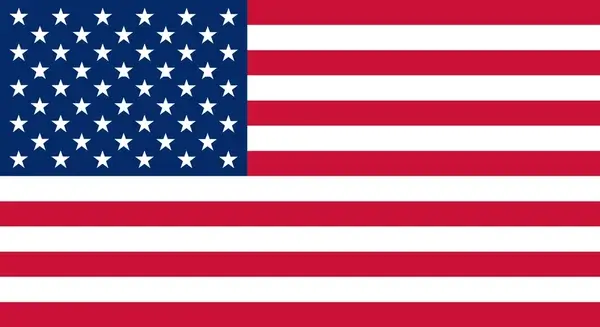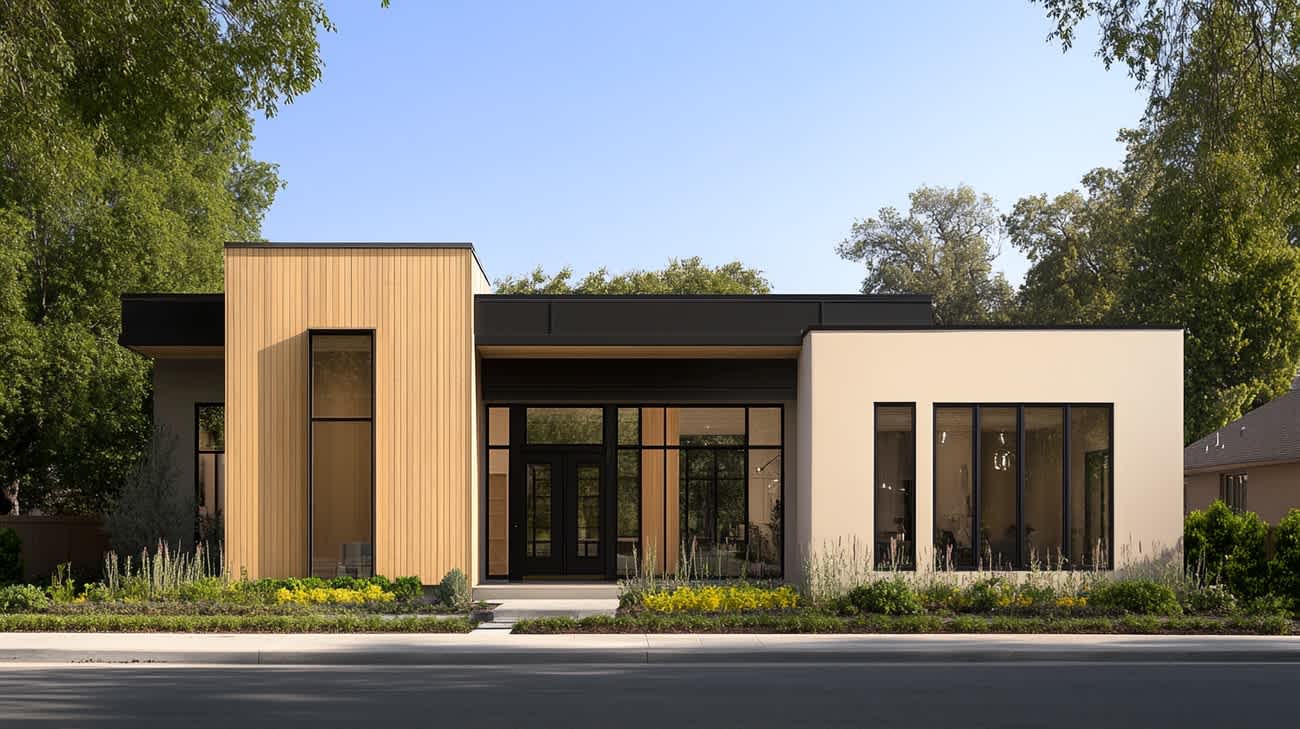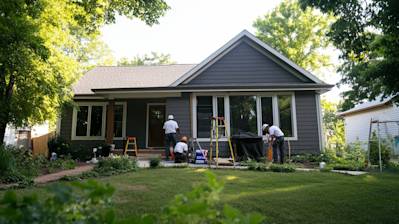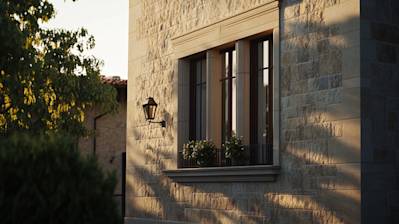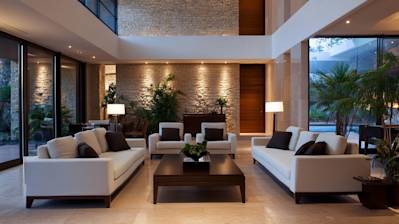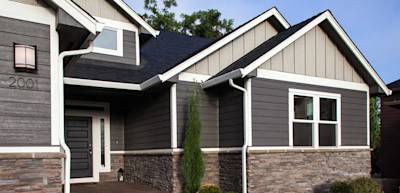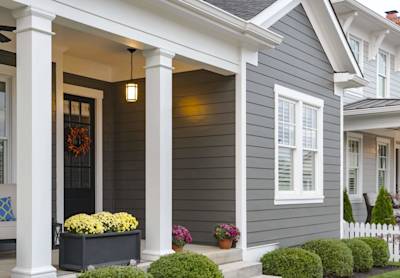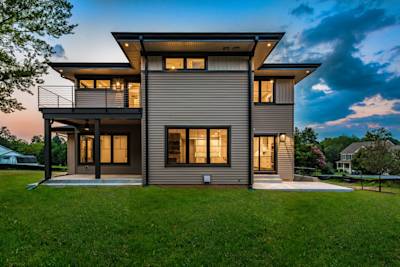Housing accessories have continued to evolve with trendy innovations that do not only make your home aesthetic but also functional and cost-effective. A profound evidence of this development is vertical siding, which is gradually becoming a gauntlet choice among building contractors and homeowners. In this article, we will explore comprehensively and intricately why vertical siding is the housing trend everyone is talking about.
The Allure of Vertical Siding
Essentially, vertical siding, also known as board and batten, is fundamentally a method of installing siding panels vertically. As opposed to the conventional horizontal siding, vertical siding offers a refreshing architectural appeal that establishes uniqueness and individuality.
Understanding Vertical Siding
Vertical siding is an innovative siding design that involves installing long vertical planks or panels to the exterior side of a house. This design incorporates narrow trim strips (also known as battens) to cover the seams. It is crucial to understand that vertical sidings come in two forms: traditional and seamless.
Traditional Vertical Siding
- Long wooden boards are usually installed vertically side by side.
- A narrow wooden strip (batten) is fixed over the gap between the boards.
- Offers a rustic look.
Seamless Vertical Siding
- Popular with modern houses.
- The vertical panels are made from vinyl or similar materials.
- Displays no visible gaps.
- Showcases a homogeneous appearance.
The Broader Spectrum of Vertical Siding Materials
The evolution of vertical sidings has led to the availability of a variety of siding materials. Some of the predominant materials include:
- Vinyl
- Wood
- Engineered wood
- Fiber cement
- Steel
Each material has its unique flavor and offers different levels of durability, aesthetics, and functionality in numerous climatic conditions.
The Fine Choice for All Kinds of Architecture
Vertical sidings aren’t specifically made for a particular type of building; instead, they are versatile enough to adapt to various architectural designs.
Urban Homes
Vertical siding provides a sleek, modern aesthetic that perfectly complements urban architecture. The materials used in vertical siding often reflect urban design concepts with refined textures and smooth finishes.
Rural Homes
For rural homes, vertical siding still finds a fitting canvas. It reflects the raw, natural textures and colors of the countryside. Wood material vertical siding can give a perfect rustic charm to rural homes and cabins.
Vertical Siding Installation – Key Tips
While vertical siding installation might seem like an effortless DIY project, ensuring an optimal and flaw-free installation requires careful planning and precision. Keep in mind the following tips:
- Always begin from one corner and proceed towards the other.
- Take precise measurements to make sure the siding lengths match the height of the house.
- Always install a water-resistive barrier before installing the siding.
- Allow a small gap at the bottom for expansion and contractions due to weather variations.
- Ensure there’s a proper water drainage setup to prevent water damage.
Maintenance of Vertical Siding
Vertical siding is known for its low maintenance requirement. Depending on the material used, you might only need an occasional cleaning with soap and water. However, wooden vertical sidings may require periodic painting or staining to maintain their looks and durability.
Cost Implications of Vertical Siding
The cost of installing vertical siding varies based on factors such as siding material, house size, and labor charges in your area. However, it’s generally seen as a cost-effective option due to its durability and less demanding maintenance.
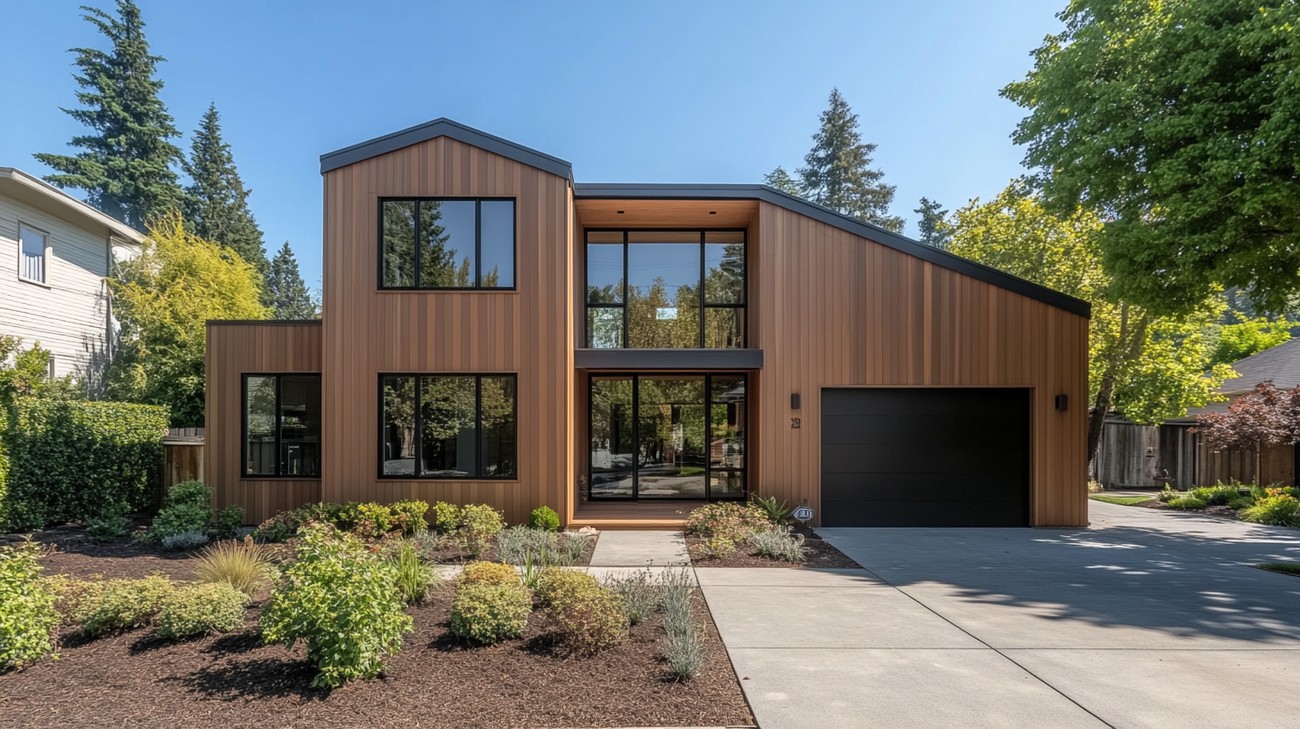
Frequently Asked Questions about Vertical Siding
In what situations will vertical siding be preferred?
Vertical siding can transform the appearance of your property, giving it an entirely fresh look. As it generally produces a more contemporary and elegant feel, it's often preferred on buildings aiming for this aesthetic. It can also be an ideal choice if you're restoring a house and want to keep its original architectural style. Any house that originally sported vertical siding will retain its authenticity after being restored using the same.
Does vertical siding require regular maintenance?
Yes, just like other types of siding, vertical siding does require maintenance. However, it generally requires less maintenance compared to horizontal siding, especially when it comes to cleaning. It is because the vertical design prevents the accumulation of dirt and debris more effectively.
Can vertical siding be installed on any type of building?
While the use of vertical siding isn't restricted to any specific type of buildings, it's important to note that large buildings often benefit most from vertical siding. This is because it accentuates the building’s height, creating a grandeur effect.
Can I combine vertical siding with other types of siding?
Yes, of course! Mixing various types of siding on your structure can create an appealing contrast and enhance the overall aesthetic appeal. Vertical siding can be matched together with horizontal siding or even styles like board and batten for a personalized touch.
What materials are commonly utilized to make vertical siding?
Vertical siding is made from a variety of different materials. The most commonly used material is vinyl, but you can also find vertical siding made from wood, fiber cement, metal, and even composite materials. The type of material chosen for your vertical siding affected by your budget, aesthetic preference, and the level of upkeep you are prepared to commit to.
Is vertical siding cost-effective?
When it comes to pricing, the total cost of the siding job will ultimately depend on the material and labor costs in your area. However, it's worth noting that materials like vinyl or aluminum tend to be more affordable compared to wood or fiber cement options. But regardless of the material, vertical siding is likely to last for decades, making it a cost-effective solution in the long run.
How is the installation process for vertical siding?
The installation process for vertical siding is somewhat more intricate than for horizontal siding. This is because it requires an extra step of adding furring strips, which are thin strips of wood or metal that level the surface for the vertical siding to attach to. This process ensures a snug and stable fit.
Can I install vertical siding myself?
While it’s technically possible to install vertical siding yourself, it’s often recommended to hire a professional installer. The reason being, vertical siding installation is quite challenging and requires specific tools and knowledge, which can include complimenting the siding with weather-resistant barriers and being familiar with local building codes.

Pros of Vertical Siding
Aesthetics
Distinctive Appearance
Vertical siding offers a unique and distinctive appearance that can set your home apart from others in your neighborhood. It creates a visually interesting pattern that can add depth and character to your home's exterior.
Versatility
Vertical siding is adaptable and suitable for a wide range of architectural styles, including modern, contemporary, and rustic designs. It can be further customized with different colors and finishes to match the homeowner's preferences and the home's overall aesthetic.
Durability
Weather Resistance
Vertical siding is known for its strength and durability. The panel's orientation allows for excellent resistance against harsh weather conditions, such as strong winds, heavy rains, and extreme temperatures. This feature makes it a good choice for homes in areas that experience severe weather regularly.
Rot and Pest Resistance
In contrast to traditional horizontal siding materials, vertical siding is less likely to retain moisture due to its upward-facing orientation. This trait helps protect your home from wood-decay fungi, which thrive in damp conditions. Moreover, vertical siding is often less appealing to pests, mitigating the risk of pest-related structural damage.
Maintenance
Ease of Cleaning
With vertical siding, cleaning tasks may be easier as its unique orientation doesn't trap as much dirt or debris as horizontal siding. This means less time and effort spent on maintaining your siding's appearance.
Installation
Ease of Installation
Vertical siding often requires fewer materials than horizontal siding for installation, which can lead to savings on labor and material costs. Moreover, vertical siding can be easier and quicker to install because it doesn't require lapping.
Cons of Vertical Siding
Aesthetics
Less Traditional Appeal
While its unique appearance can be a benefit, it can also be a drawback to those who prefer traditional aesthetics. Vertical siding isn't as common as horizontal siding, and it might not suit every architectural style or personal preference.
Durability
Potential for Water Seepage
While vertical siding does well against most weather conditions, there may be a higher risk for water seepage. If not installed properly, the vertical seams could allow rainwater to seep in, potentially causing damage to the underlying structure.
Installation
Need for Additional Materials
Vertical siding installation often requires the use of furring strips to create an even and flat surface for installation. These additional materials may mean extra cost and can complicate the installation process.
Highly Skilled Installation Required
Despite potential quicker installation, vertical siding requires precise craftsmanship to ensure proper fit and finish, making it less DIY-friendly. The seaming between each panel needs to be exact, and getting this right often requires a more skilled professional, adding to the overall cost.
Maintenance
Ongoing Maintenance Required
Although easy to clean, vertical siding may require more regular maintenance and inspections. This is especially true when it comes to checking the seams and joints for potential leaks or damage. Failure to conduct regular checks could lead to moisture build-up, resulting in potential damage to the home's structure.
Cost
Higher Overall Cost
While there might be savings in less labor-intense installation, the cost of the materials themselves could be higher. This is especially true if you choose more premium options like cedar or fiber cement. Moreover, the regular maintenance and inspection required might add up to a higher overall cost over the life of the siding.

Myths/Misconceptions about Vertical Siding
When it comes to home construction and design, various myths and misconceptions muddy the reality of many things, one of them being vertical siding. Vertical siding, sometimes referred to as 'board and batten', can dramatically modify the appearance of a home shifting from the more conventional horizontal orientation. Despite its appeal, there are several misconceptions about vertical siding.
Myth 1: Vertical Siding is only for Commercial Buildings
Misconception
One widespread belief is that vertical siding is exclusively made for commercial buildings.
Reality
In fact, while vertical siding is commonly employed in commercial buildings due to the unique aesthetic it provides, it's also extensively used in residential construction. There are various styles of homes where vertical siding can complement the overall design beautifully, such as Country-Style and New American homes.
Myth 2: Vertical Siding doesn't offer Variety
Misconception
Another misconception is that there’s not much variety when it comes to choosing vertical siding. This leads many homeowners to believe that opting for vertical siding limits creativity.
Reality
On the contrary, vertical siding comes in various materials, including vinyl, aluminum, cedar, and fiber cement, each with aesthetic and functional benefits. These materials also come in an array of colors and finishes allowing homeowners to tailor the siding to their preference.
Myth 3: Vertical Siding is Only for the Exteriors
Misconception
Many people believe that vertical siding is only for the exteriors of a property.
Reality
While it's true that siding is commonly used on exteriors, using vertical siding over a chosen area of an interior wall can provide an impressive design feature. Adding vertical siding to an interior space such as a bedroom or living room wall can create a captivating and modern aesthetic.
Myth 4: Vertical Siding is Difficult to Install
Misconception
A common belief is that vertical siding is more challenging to install than horizontal siding.
Reality
This isn't necessarily the case. Whether vertical or horizontal, the complexity of installation largely depends on the type of material used and the experience level of the installer. A seasoned installer should have no trouble fitting vertical siding.
Myth 5: Vertical Siding isn't Durable
Misconception
Another prevalent misconception is that vertical siding lacks durability compared to other types of siding.
Reality
In fact, properly installed and maintained vertical siding can resist harsh environmental elements and last for many years—often outliving the property it's installed on. The durability of vertical siding ultimately depends on the material used. For instance, vinyl and fiber cement vertical siding are renowned for their long-lasting durability.
Myth 6: Vertical Siding is Expensive
Misconception
There's a belief that vertical siding is more expensive than its horizontal counterparts.
Reality
The truth is, the cost of vertical siding depends on various factors like the material chosen, the total area to be covered, the complexity of the installation, and the region where you live. Some types of vertical siding, like vinyl, are quite affordable.
Myth 7: Vertical Siding is Hard to Maintain
Misconception
Many homeowners steer clear from vertical siding under the assumption that it requires a lot of maintenance.
Reality
The maintenance required largely depends on the type of material used. For instance, vinyl vertical siding requires minimal maintenance and can be easily cleaned with a hose and soapy water. Even wood, which is perceived to require intensive maintenance, can be kept in good condition with regular staining or painting.
Myth 8: Vertical Siding Doesn't Affect Resale Value
Misconception
A common misconception is that vertical siding has no impact on the resale value of a home.
Reality
Any feature that enhances a home’s visual appeal can potentially increase its resale value. Vertical siding can give a home a distinctive, modern look, potentially attracting more buyers and boosting the property's resale value.
In conclusion, although vertical siding may be cloaked in misconceptions, in reality, it's a versatile option for both commercial and residential properties. Quite apart from offering variety and aesthetic value, it's also durable, easy to maintain, and can potentially boost the resale value of your property.
Summary
Vertical siding is a brilliant addition to any home or building. With its unique visual appeal and practical benefits, it adds both character and value to any property. Whether it's the traditional, rustic charm you're going for or a sleek, modern aesthetic, vertical siding can seamlessly fit into your design while offering the much-needed durability and weather resistance.
There's a reason why vertical siding continues to gain popularity among homeowners and contractors alike. Apart from its distinct style, it's known for its ease of installation and low maintenance. Using vertical siding eliminates the need for frequent repaint or repair jobs, making it the perfect choice for those seeking a stylish yet low upkeep siding option. Plus, it's available in a wide range of materials and colors, ensuring there's a perfect match for every taste and preference.
Renovations and home improvements can be a daunting task but choosing the right materials shouldn't be. That’s where vertical siding comes in. It's a practical solution that offers long-lasting aesthetics, efficient water-shedding capabilities, and easy installation. So whether you're planning a major overhaul or a small revamp, consider vertical siding. It's a minor detail that can make a major difference.
About Solid Construction & Design
Solid Construction & Design is a family-owned and operated business proudly based in the heart of Sacramento, CA. With a strong focus on quality and customer satisfaction, we specialize in providing a wide range of construction and remodeling services tailored to suit different residential and commercial projects. Our team is passionate about bringing our clients' vision to life while ensuring every project is completed with exceptional craftsmanship and attention to detail. We have been part of the Sacramento community since day one and we love making our hometown beautiful, one build at a time. Whether you’re planning a kitchen remodel, a home addition, or an entirely new commercial building, count on Solid Construction & Design to deliver solid results on every job!
